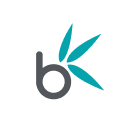You may think of Pinterest simply as a platform for mood boards and inspiration, but the reality is shifting rapidly. With over 500 million monthly active users and a growth trajectory that positions it firmly in the discovery space, Pinterest is quietly establishing its role as a search and planning hub.
Recent research indicates that approximately 66% of users turn to Pinterest to find ideas, products, or services. That makes it more than just a social network; it’s a visual search engine where people arrive with a specific intent.
They’re not just scrolling… they’re searching, curating and planning what comes next.
In this article, we’ll explore how Pinterest continues to act as a powerful discovery engine, why it deserves a place in your search strategy, and how a multi-channel approach, where SEO and social work together, ensures your brand shows up wherever inspiration strikes.
Pinterest as a discovery engine
Think about the last time you searched for a new recipe, interior inspiration or a newly discovered actor. For a growing number of people, the first stop isn’t the typical search bar; it’s Pinterest.
Pinterest is firmly positioned as more than a social feed: it’s a visual search and inspiration engine.
What sets Pinterest apart is user intent. A striking 96% of top searches on the platform are unbranded, signalling that people aren’t just browsing old favourites, they’re actively looking for something new. In fact, research shows that over 50% of users use Pinterest to shop.
This behaviour flips the social script.
People arrive on Pinterest to discover, to plan, and often to act. They’re saving ideas, building boards and mapping out decisions well ahead of any transaction. For brands, that means Pinterest isn’t a complementary channel; it’s a critical part of the discovery journey.
In short, if your content lives only on search and social channels like Google and Instagram, you could be missing the moment when someone moves from “I wonder” to “I will”. Pinterest captures the “I might” in between, and that’s exactly where your brand should show up.
Why Pinterest still matters for SEO
For a social media platform, Pinterest behaves far more like a search engine.
Every pin, board and description is built around keywords, relevance and user intent; the same building blocks that drive Google’s algorithm. The difference is that Pinterest delivers those results visually, making it both a search and a discovery platform in one.
In a landscape where brands are fighting to be found, Pinterest remains one of the few spaces where organic visibility is still possible without enormous ad spend. Content on Pinterest doesn’t vanish after a few hours. In fact, Pins can continue to drive traffic months, even years, after they’re published.
That long lifespan makes it a quiet powerhouse for SEO-led content.
From an SEO perspective, Pinterest can also enhance performance beyond its own walls. Optimised Pins linking back to your site create quality referral traffic, and keyword-rich descriptions can help your content appear in both Pinterest and Google image search results.
In essence, every Pin becomes another indexable touchpoint for your brand. One that aligns neatly with your broader SEO goals.
Notice us, Pinterest!
If you’ve ever wondered why some Pins take off while others quietly fade, it’s not luck; it’s Pinterest’s search engine at work.
And yes, that’s exactly what it is: a search engine.
Every Pin you post is indexed, categorised and ranked based on how relevant and engaging Pinterest thinks it will be for someone scrolling or searching. The platform looks at a few key ingredients when deciding what to show. First, keywords matter, just as they do on Google. Pinterest reads your Pin title, description and board name to work out what your content is about.
Next comes context.
The first board you save a new Pin to sends a strong signal about where it fits. Think of it as Pinterest’s way of understanding the “category” of your content. Save your Pins to the most relevant board first – it helps the algorithm place your post in front of the right audience.
Pinterest also rewards fresh content. New images, new URLs and new boards tend to get more reach than reposted or recycled visuals. That doesn’t mean you can’t repurpose existing ideas – just give them a fresh spin with updated visuals or a new caption to boost distribution.
And of course, engagement matters. The algorithm takes notice of how people interact with your content. Saves, clicks and even comments feed back into Pinterest’s understanding of what people find useful. The more engagement your Pins receive, the more visibility they earn across searches and recommendations.
Joining the dots
Pinterest shouldn’t sit in a silo. It works best when it’s part of a joined-up strategy that connects search, content and social.
Here’s how it fits together…
A well-optimised blog post on your site builds authority with Google. That same content, turned into a handful of Pins, suddenly has a second life – driving discovery on Pinterest, inspiring saves and clicks long after it’s published. From there, your social channels can share and amplify those visuals, bringing the message full circle.
It’s a simple but powerful cycle: SEO fuels content, Pinterest drives discovery, and social builds momentum.
Together, they create visibility at every stage of the customer journey. For brands, that means consistency is key. Keep your visuals on-brand, your keywords aligned, and your analytics connected. Pinterest may look like a creative platform, but behind every Pin is a data story.
Pin smarter, not harder
01: Use keyword-rich titles and descriptions
On the platform, Pinterest doesn’t just look at visuals – it reads your text too. The algorithm places weight on titles, descriptions, board names and even alt text.
02: Keep your content fresh
Unlike a fleeting social post, Pins benefit from long-term visibility. Pins between one and two years old were being saved on average 68 times in the last 90 days. Regular posting signals consistency to Pinterest’s algorithm and improves your reach over time.
03: Prioritise vertical visuals
Pinterest is a visual discovery engine. Vertical (2:3 aspect ratio) images with readable text overlays tend to perform better because they immediately show users what the content is about.
04: Keep your boards focused
The first board you save a new Pin to matters. It’s worth creating board titles and descriptions that are clear, keyword-rich and aligned with your brand niche.
05: Pinterest is search, not just social
Most people coming to Pinterest are looking with intent. 96% of top searches on Pinterest are unbranded, meaning users are open to discovering new brands. That means content should focus on solving specific queries rather than merely promoting a brand.
06: Link, link, link!
Your Pinterest presence should support your broader SEO and content strategy. Optimised Pins that link to blog posts, product pages or landing pages create valuable referral traffic and boost your site’s authority.
Bring your organic strategy to life
Pinterest proves what we’ve known for a long time – search and social aren’t separate anymore. They work best when they work together.
And that’s exactly how our organic team works. Our SEO and social specialists collaborate daily to create strategies that join the dots between content, discovery and intent.
If you’re looking to optimise your site for search or to create social-first content that fuels visibility across multiple platforms, we make sure your brand is seen wherever your audience is searching.







